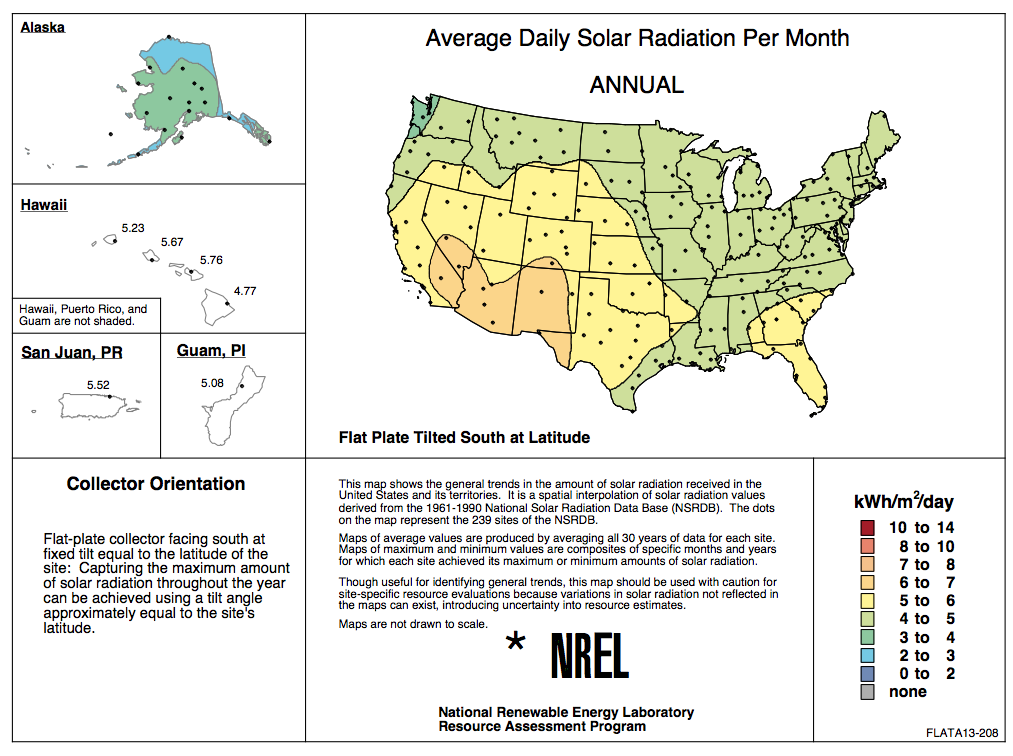The power-generating abilities of solar arrays are vulnerable to a variety of natural disasters, such as clouds and nighttime; whereas fossil fuel-based plants suffer from limited resources and have a tendency to subject locals to more than their share of pollution. Unlike fossil fuel plants, solar power doesn't really pollute, but it also costs a lot more, relative to other forms of electricity generation. To maximize the benefits of both technologies, the FPL Group utility has decided to combine them just north of West Palm Beach, FL.
Essentially, the world's second-largest solar plant is being constructed on the back of the U.S.'s largest fossil-fuel power plant. By the end of 2010, the solar array will be comprised of 190,000 mirrors, propped up by thousands of steel pylons.
According to the New York Times:
"This project is among a handful of innovative hybrid designs meant to use the sun's power as an adjunct to coal or gas in producing electricity. While other solar projects already use small gas-fired turbines to provide backup power for cloudy days or at night, this is the first time that a conventional plant is being retrofitted with the latest solar technology on such an industrial scale."
This facility will be known as the Martin Next Generation Solar Energy Center, and it certainly will be using some of the latest technology. Again, the NYT:
"The solar panels concentrate the sun's rays into a vacuum-sealed tube that contains a synthetic oil, which heats up to 748 degrees Fahrenheit. The oil is then used to produce steam that is fed into an existing turbine to produce electricity. Using small sensors, the mirrors will be able to rotate during the day to track the sun's movement. In case of a hurricane, they will flip upside down for protection."
So, on sunny days, this utility company will be able to cut back on its use of natural gas and its associated CO2 emissions. Or, when the weather is sunny and the air is hot, while most are blasting their A/C units, the hybrid plant can run both technologies to accommodate the demands of all of its customers.
Just to be clear, cutting back does not mean cutting off. The solar plant, at maximum, will be able to generate 75 megawatts of power; whereas the existing gas plant produces up to 3,800 megawatts.
This hybrid model is one way for utilities to comply with state legislation that mandates increases in renewable energy usage.
Solar energy is not distributed equally. And it's not necessarily better the closer you find yourself to the Equator. This map (from the U.S. Department of Energy EERE) shows that although FL is a more efficient location than, say, Seattle, the best places for solar energy installations in the U.S. are in the Southwest.

Map provided by the U.S. Department of Energy EERE. You can also download a PDF version.
These requirements are better known as Renewable Portfolio Standards (RPS). As of March 2009, 29 states (plus DC) had adopted mandatory RPS. In addition to these 29, six other states have renewable portfolio goals. The Pew Center is a good resource that tracks legislative developments.
See a map outlining the state-by-state differences in policy for Renewable & Alternative Energy Portfolio Standards.
View a table that outlines these policies for states.
Part of the climate bill that's supposed to be being debated in Congress would bring these Renewable Portfolio Standards to a federal level, setting minimum standards (but not maximum standards).



Comments
This seems like a really smart idea that would combine the strengths of each option. In sunny areas it can be paired with solar farms, in windy areas it could be paired with windmills, etc. The Commentary in February CEP wrote about combining windfarms with Massive Electricity Storage - this would be the same effect. Though maybe a little harder politically since it would still require a fossil fuel plant.
Good catch, Robert. AIChE members can access the February issue's Commentary by David Gushee and Bernard Lee here:<a href="http://www.aiche.org/cep/issues/2010-02/index.aspx." target="_blank">http://www.aiche.org/cep/issues/2010-02/index.asp...</a> Just click on "Commentary" on the left and you'll bring up the PDF.
Does the 75 MW solar plant include a capacity factor? Like wind turbines, the energy generated by a solar cell will vary depending on the conditions (sunny, windy, etc). A wind turbine usually operates at around with a 33% capacity factor, so if you have a 1 MW capacity wind turbine you can realistically expect around 330 kW on average.